THOMAS HART BENTON (1889-1975)
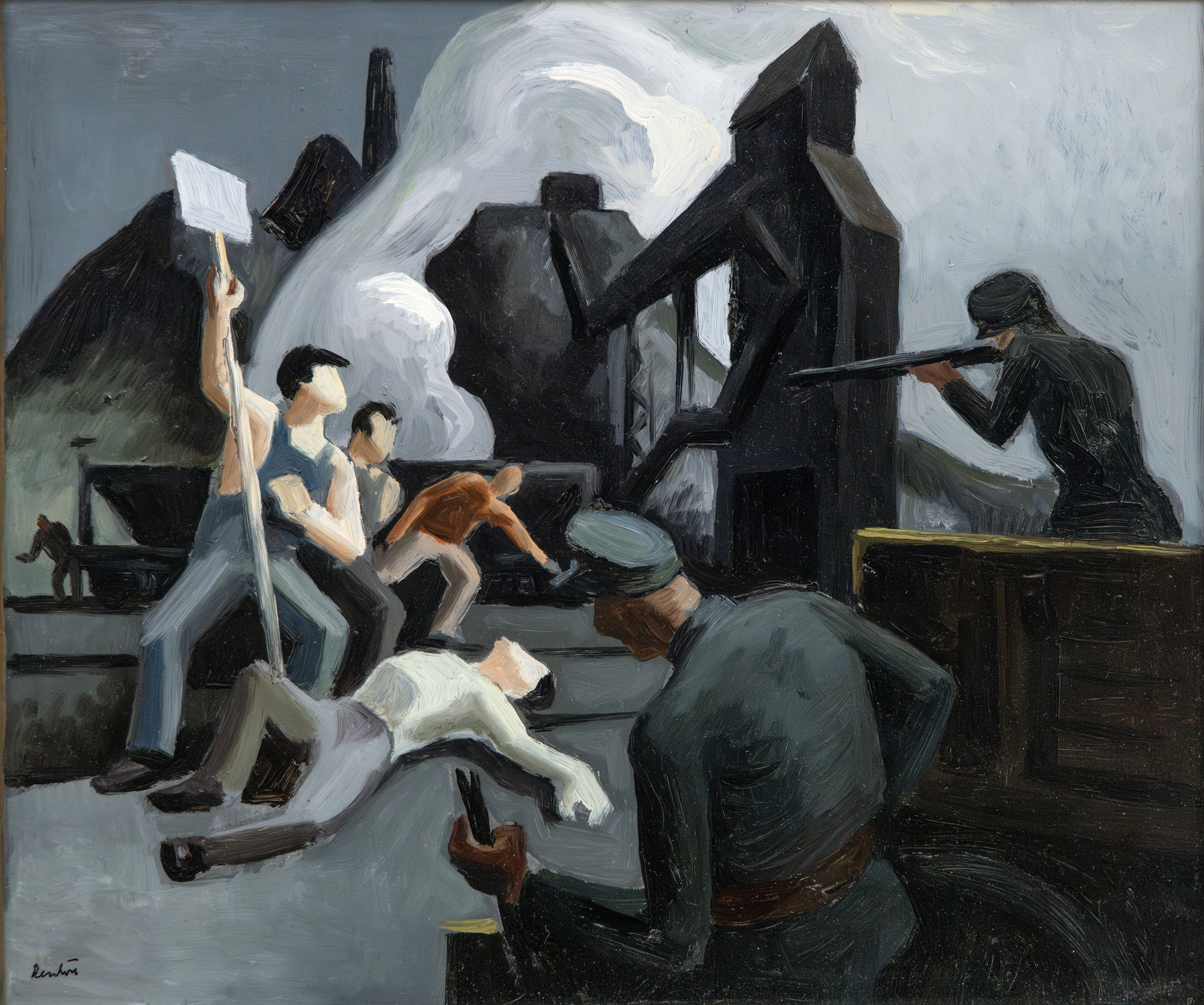
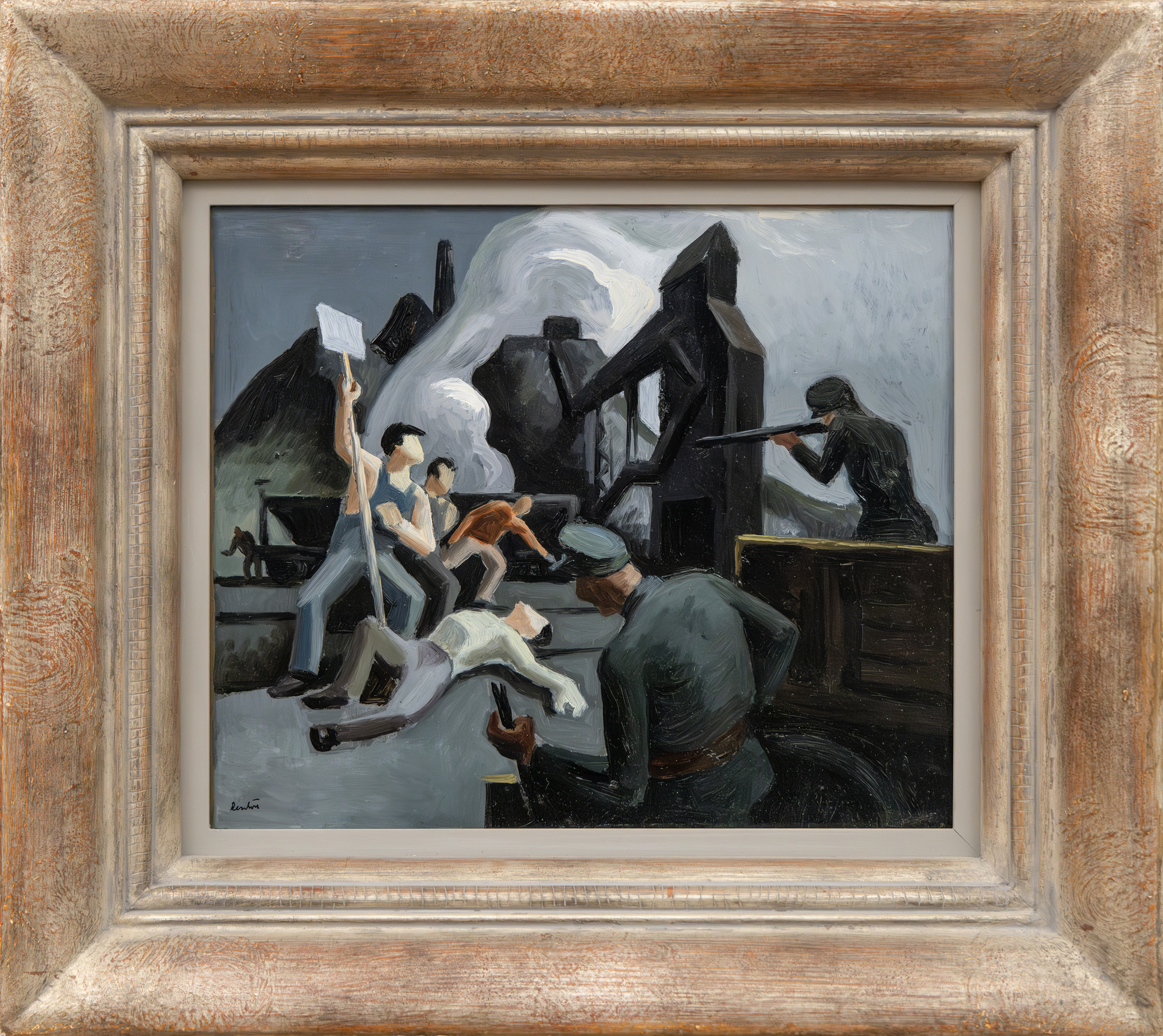
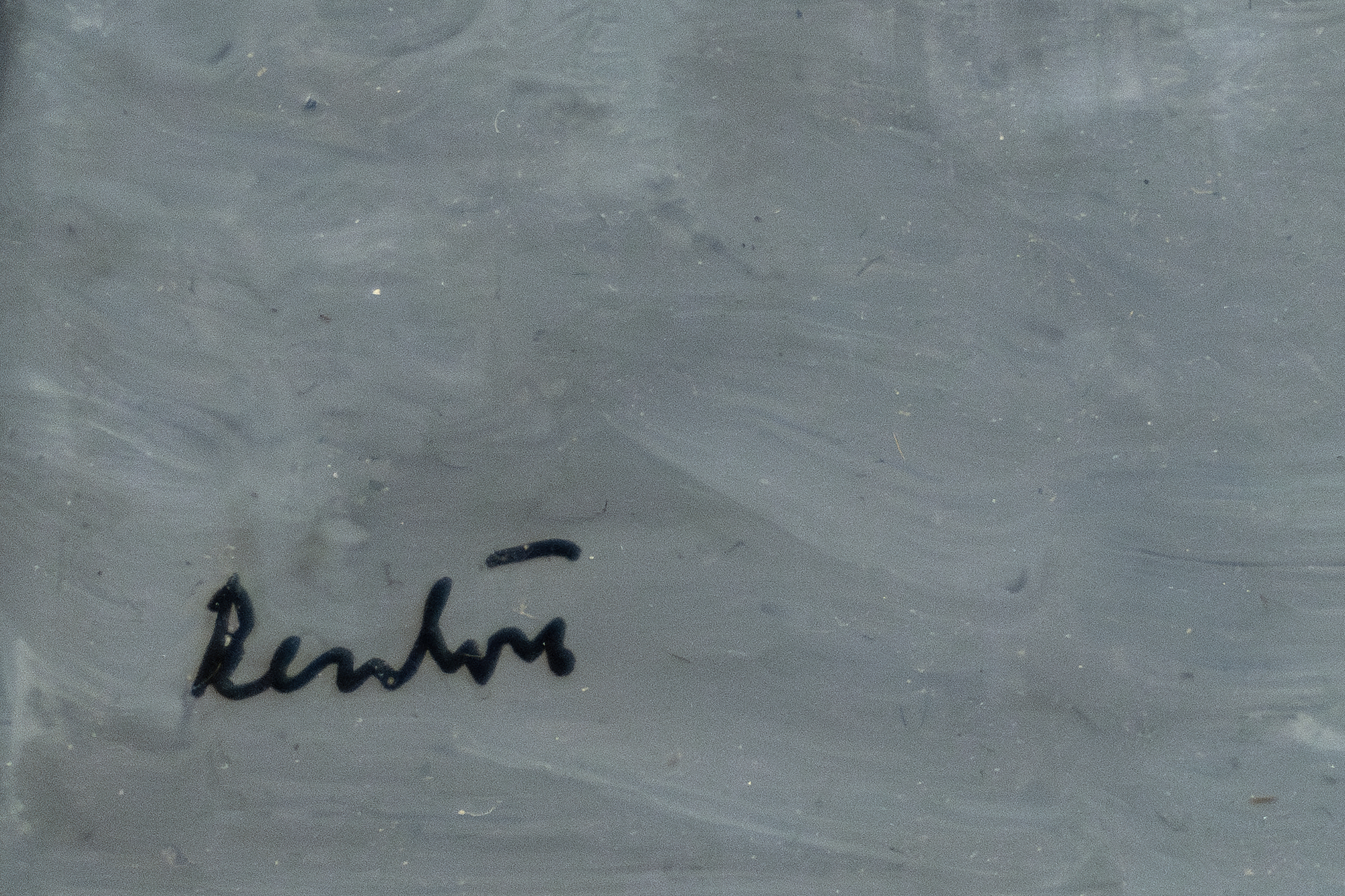
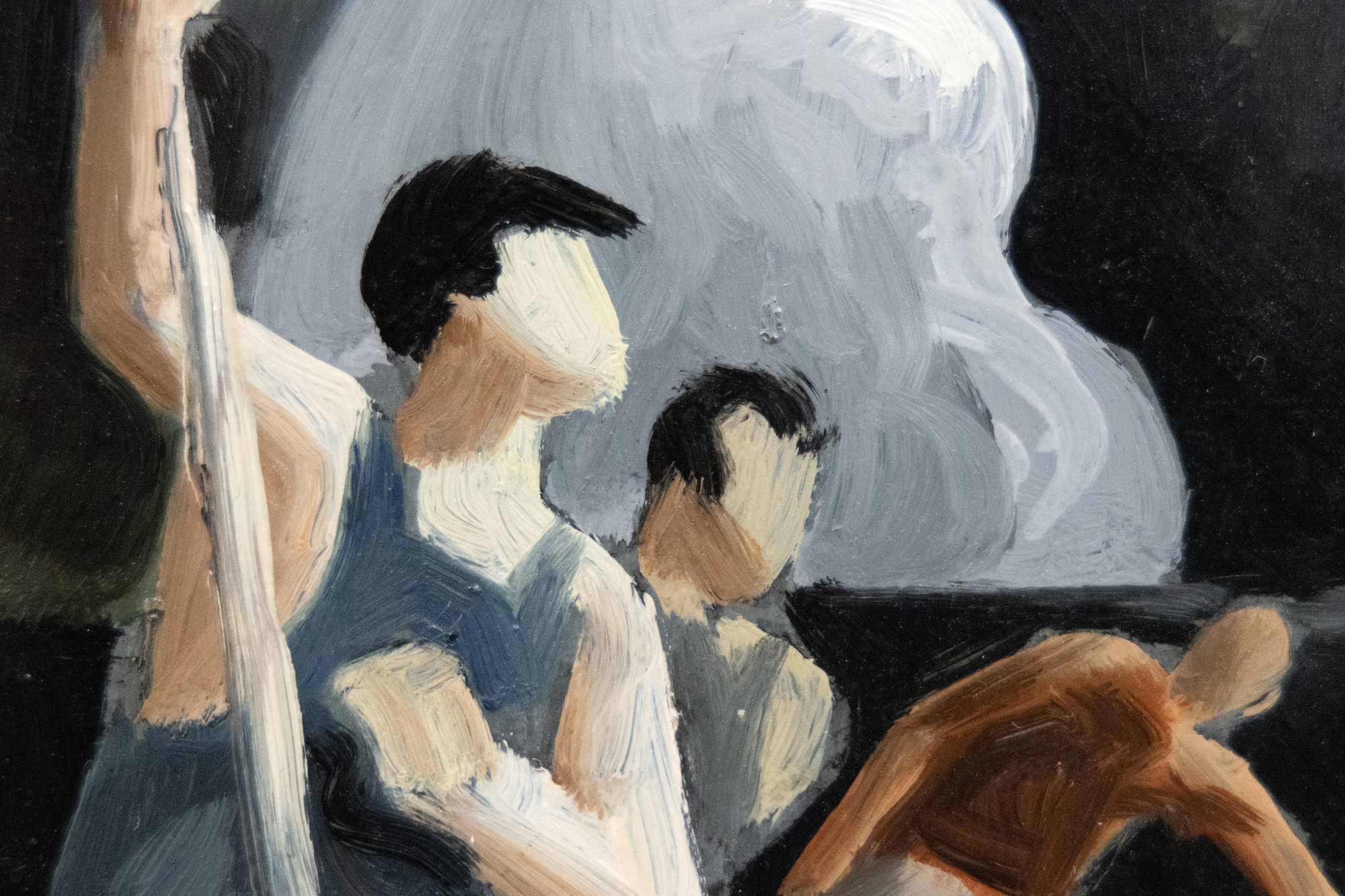


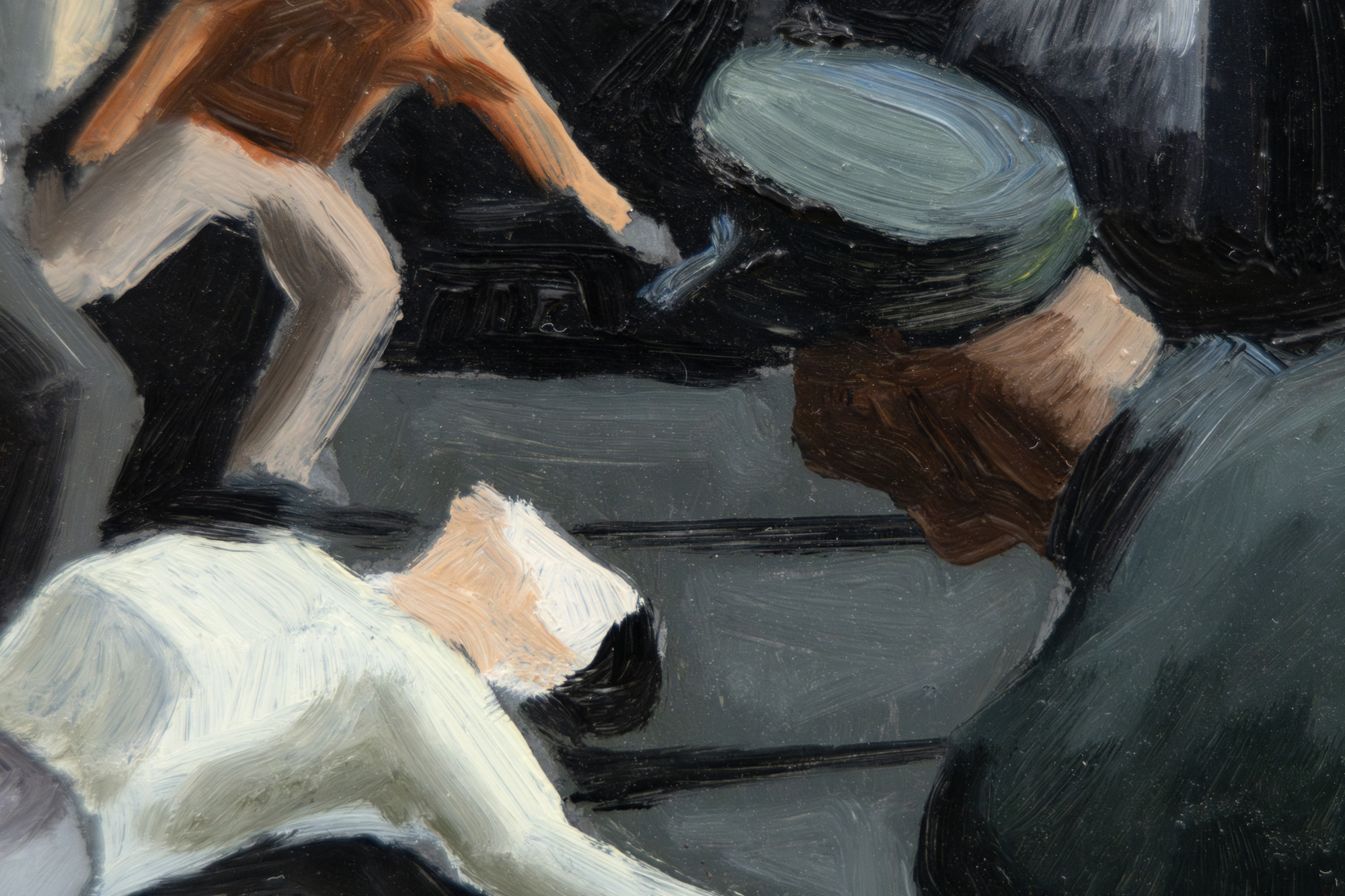



Provenance
Thomas Hart Benton Testamentary Trust, United Missouri BankPrivate Collection, acquired from the above
Literature
Garret Keizer, "Labor's Last Stand," Harper's Magazine, September 2018, vol. 337, no. 2020, illus. cover and indexPrice420,000
The figures are robust and grounded, reflecting Benton's signature style of muscular forms. The scene, though aggressive and violent, displays commitment and sacrifice. Two officers fire on the strikers, one of whom has fallen to the ground, shot. Set against the backdrop of an imposing mining complex, a towering black structure known as a 'tipple' looms ominously over the strikers. Its darkly sinister anthropomorphic shape contrasts sharply with the lighter, more organic human figures — an appearance intensified by its coal chutes resembling mechanical arms. This visual metaphor of industrial oppression underscores the pervasive threat posed by the coal mining industry and those paid to protect its interests.
Through "Mine Strike," Benton not only documents a specific historical moment but also critiques the broader socio-economic conditions of his time. His depiction of the workers' plight is a powerful statement on the exploitation and struggles the working-class faces. Benton's political leanings towards advocating for social justice and his commitment to portraying the reality of American life are vividly encapsulated in this painting, making it a poignant and enduring piece of art.
Benton made two compositions about strike activities during this time: this painting and another, “Strikebreakers”, painted in 1931. Of the two, Benton used "Mine Strike" as the basis for a well-known lithograph issued in 1933. Benton described the scene as a "Strike battle" in the coal country. This is an imaginary reconstruction of a situation only too common in the late twenties and early thirties."


